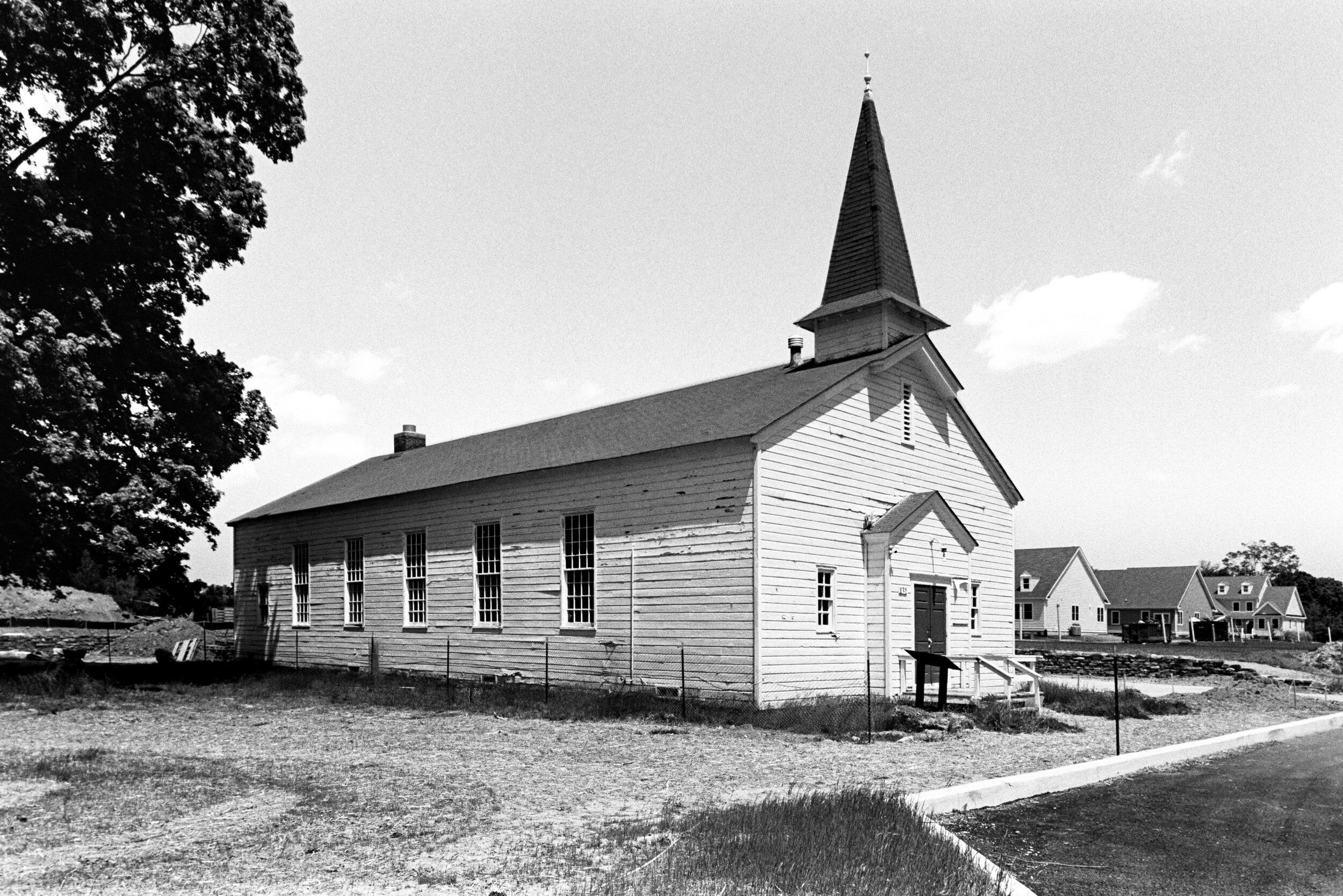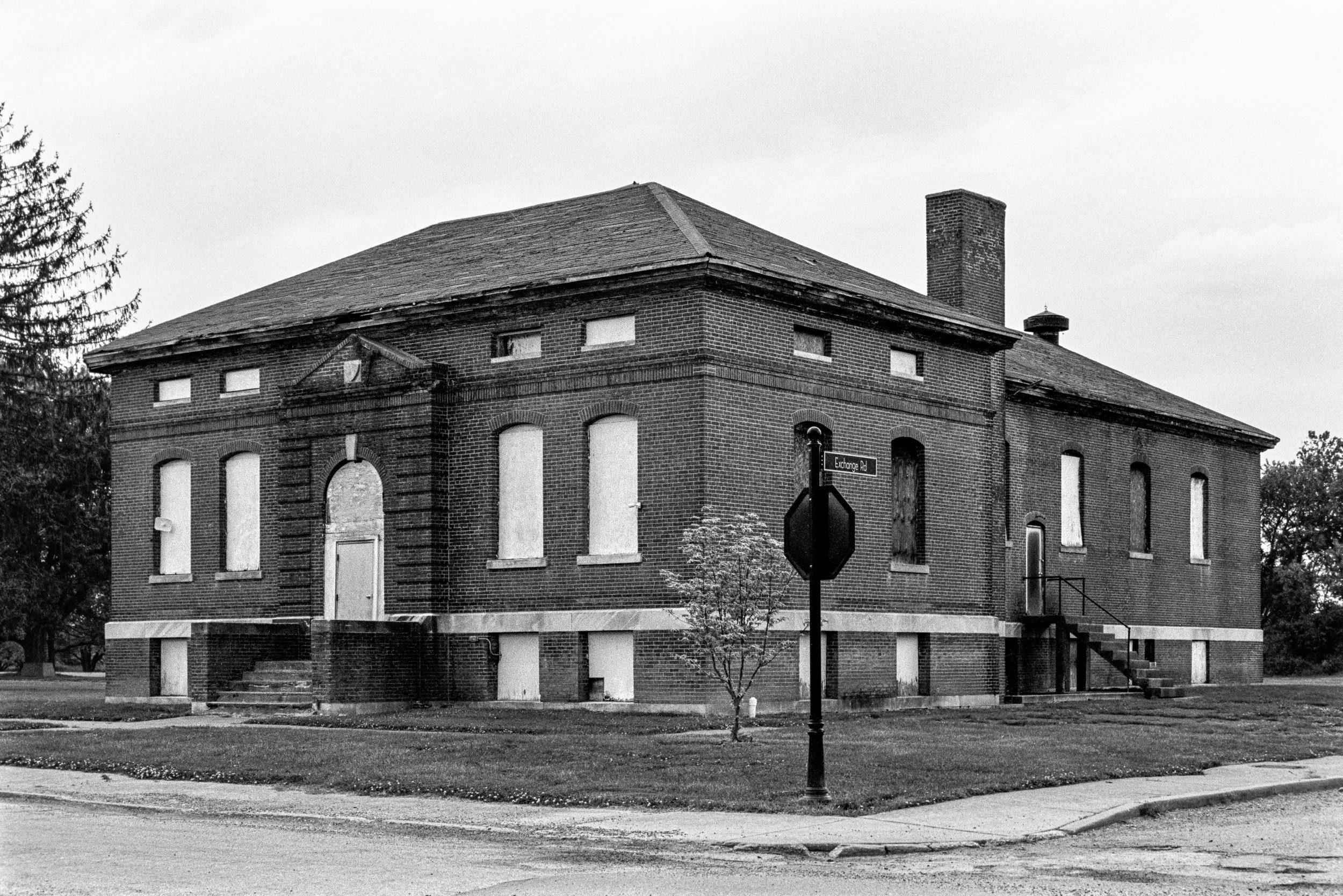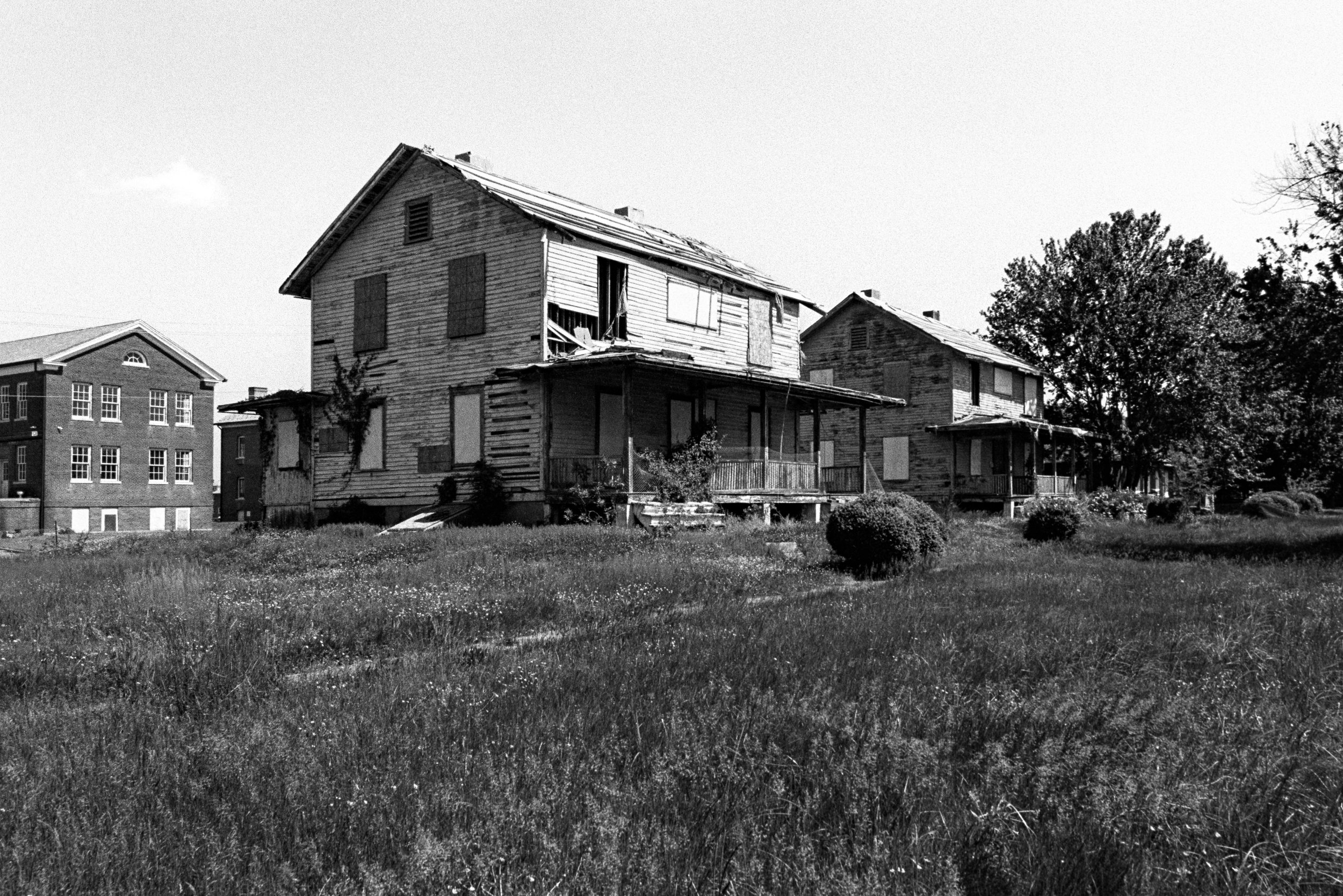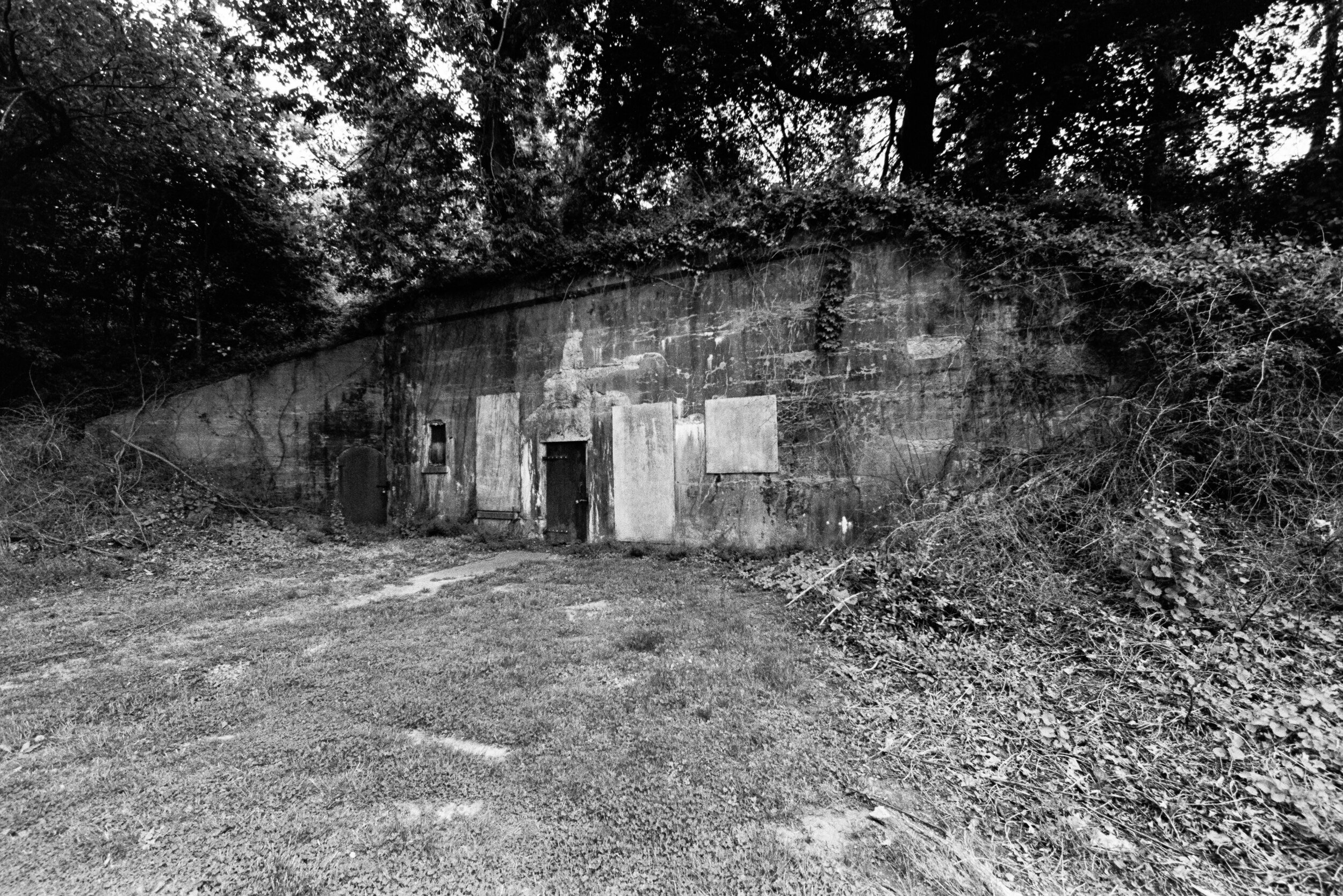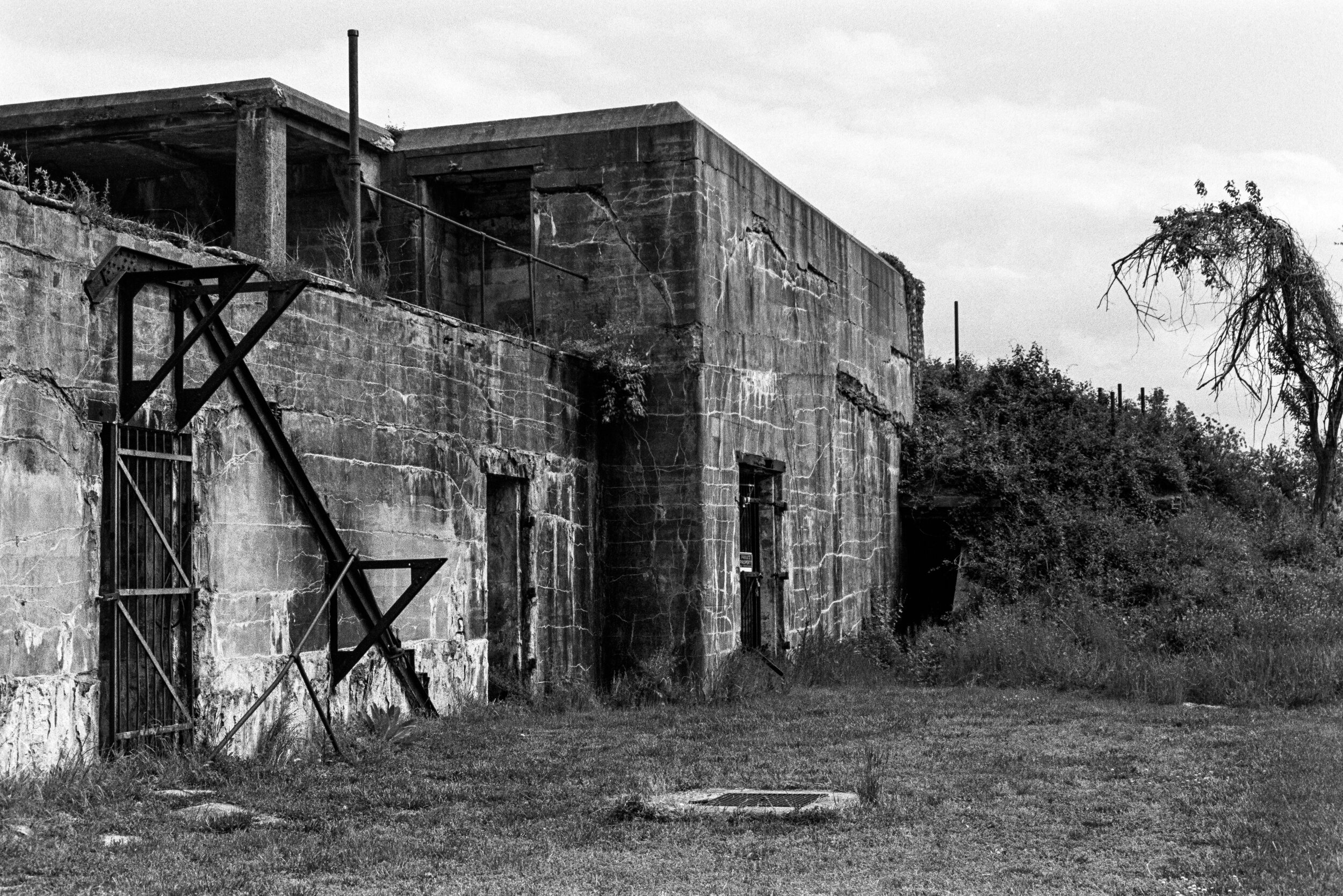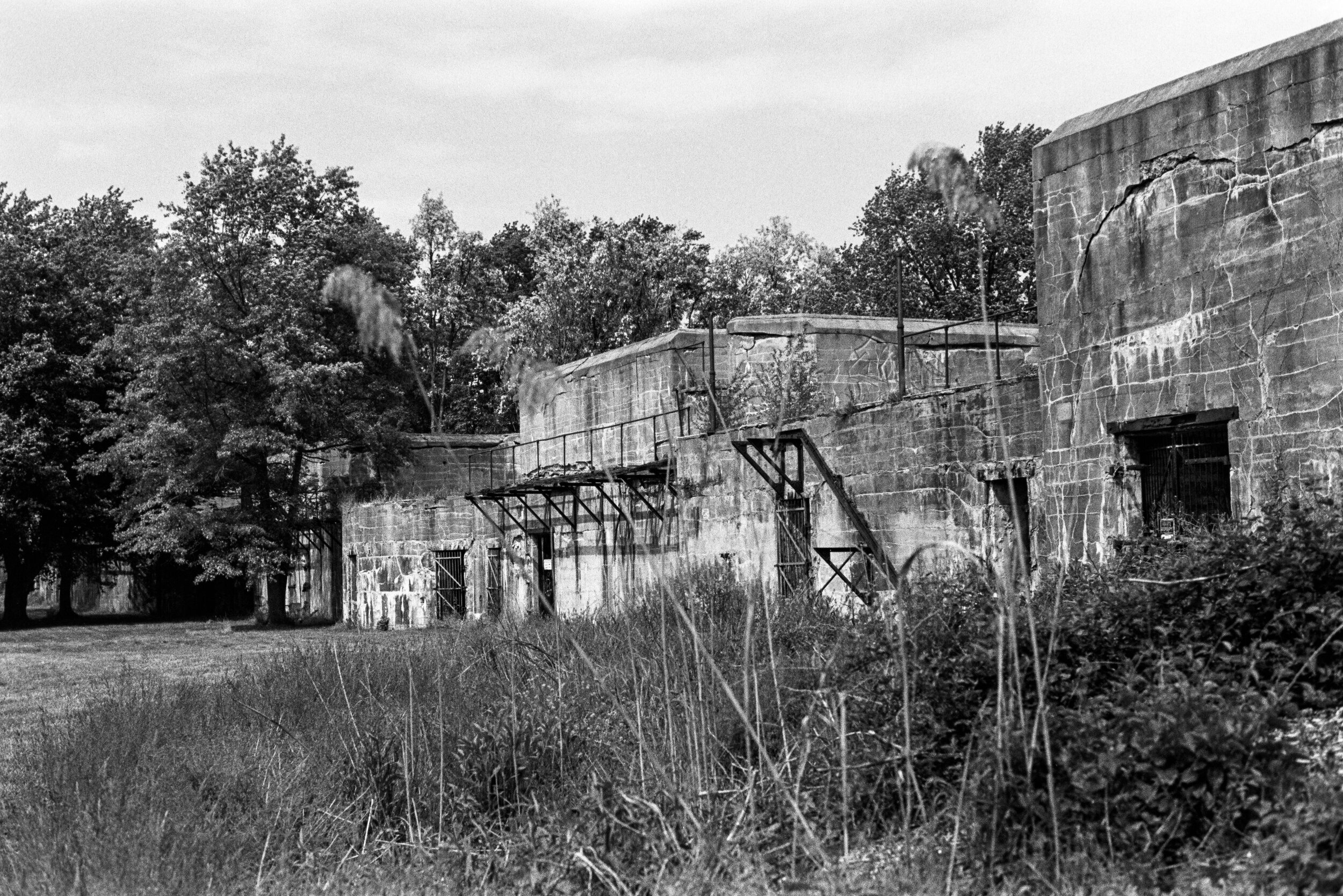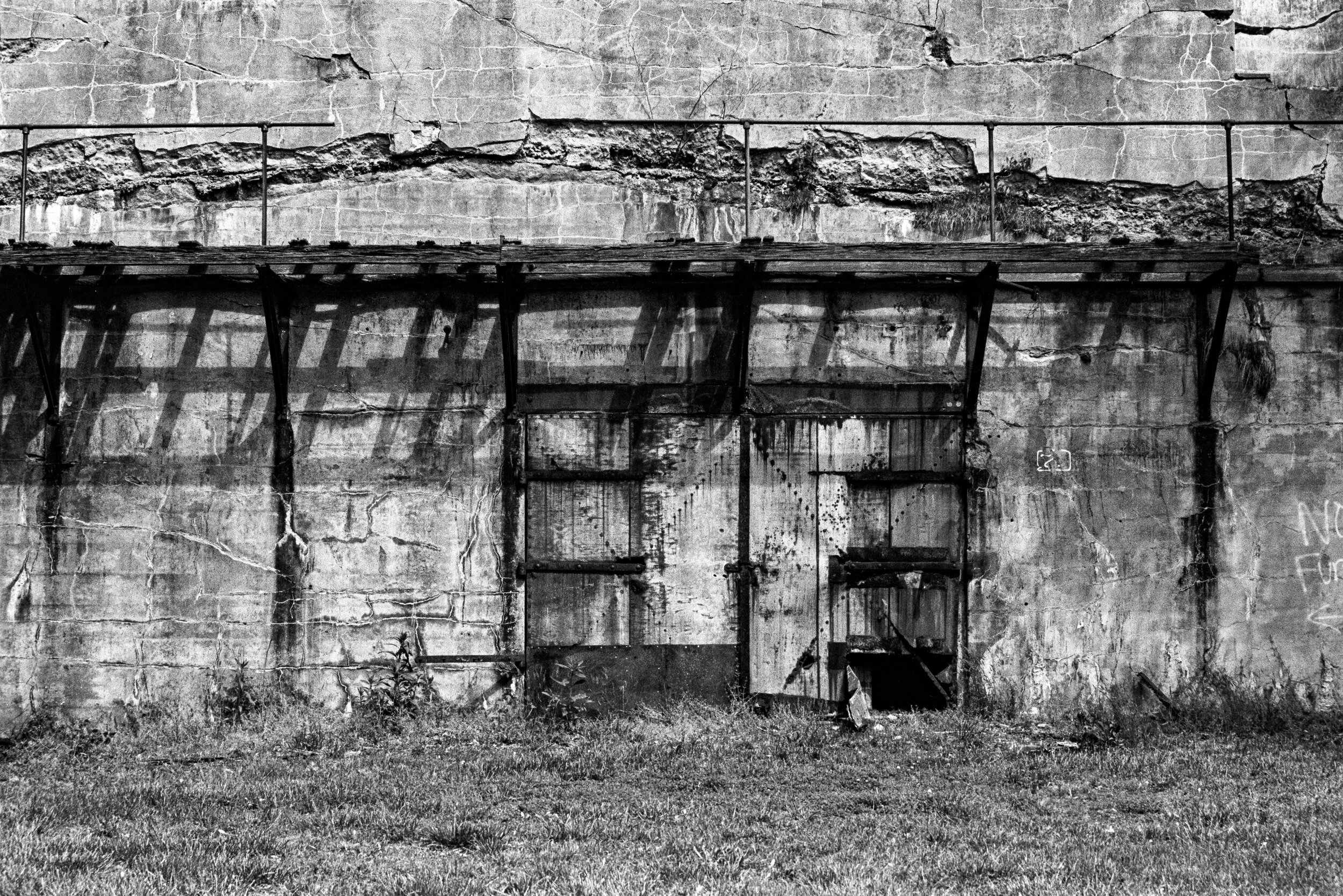Fort DuPont | Delaware City, Delaware
Situated on the banks of the Delaware River in Delaware City, DE, Fort DuPont was established during the Civil War and remained in service through WWII to protect cities such as Philadelphia and Wilmington further upriver. Armed with a variety of defensive measures over the years, much of the infrastructure upon which the armaments sat can still be seen by visitors today. Fort DuPont architecturally similar to Fort Hancock, another coastal defense fort I visited in New Jersey, but is somewhat sparse in terms of remaining historic structures. Part of the complex has been repurposed since the State of Delaware took over ownership of the property while some buildings have been left to rot in the elements.
I arrived at Fort DuPont on a beautiful spring day with my aunt who I was visiting for the week in nearby Clayton. I was greeted by the familiar sights of a former WWII base: a smattering of Series 600/700/800 buildings and more permanent post-Endicott period buildings were scattered across the landscape before me. The more historic buildings, including the PX (post exchange), post headquarters, officers’ quarters, barracks, and the post commander’s residence surround the parade field which is located in the historical center of the fort.
As is often the case with former military instillations, most of the surviving buildings are of brick construction – the hastily constructed Series 600/700/800 buildings of WWII just weren’t built to last. Some of the buildings undertook quite a journey to reach Delaware: a number of the officers’ quarters were floated across the inlet from Fort Mott in New Jersey, and small subset of bricks used to build the post theater came from Lord Fairfax’s Virginia mansion (circa 1736). One of my favorite architectural features, pictured above, is the small steel star that adorns the attic vents of some buildings. It’s a small touch reminiscent of the stars and stripes, and not something I’ve seen at other former military instillations I’ve visited.
The residential population of Fort DuPont exploded during WWII as men were drafted stateside and German POWs began to arrive from overseas. Temporary wooden barracks were thrown together in no time on the northwestern side of the parade field, including the nondenominational church which can still be seen today. Unfortunately, modern development is slowly encroaching on the property as the former site of these temporary barracks is turned into a cookie cutter housing development. I honestly can’t say I’m surprised given the easy access to a boat ramp and navigable waters near the property, and whoever managed to pack so many small lots into that space is probably making millions. While I’m glad that historic buildings are being preserved, watching the peaceful green space of Fort DuPont turn into a soulless development is saddening.
The main armament of Fort DuPont changed over the years but was never modernized to WWII standards. An “Abbot Quad” was constructed during the Endicott period of modernization which contained four gun pits and sixteen 12-inch coastal defense mortars. The number of 12-inch mortars per pit was eventually scaled back to alleviate cramped operating conditions, cutting the total number of mortars in half. The high embankments surrounding each pit hid the mortars and made them difficult to target if attacked by sea. This defense became less effective with the advent of military aviation post-WWI. Magazines, gun plotting rooms, minefield control bunker, and support facilities were all contained within the quad. While you cannot enter the fortification today, you’ll certainly be able to recognize the concrete and earth embankment as you wander through the park. Another battery of 8-inch and 12-inch guns can also be seen decaying to the southeast of the parade field. None of these batteries or the accompanying minefield ever saw any enemy action, being declared obsolete and scrapped prior to WWII.
Beyond the new development at Fort DuPont, a number of historic buildings have been repurposed by the state since 1948. The Governor Bacon Health Center occupies the former barrack building adjacent to the parade field, and the Delaware Surplus Services Store makes use of the former quartermaster buildings. The WWII era German POW camp, save for a single guard tower, was leveled and replaced by facilities to support the Delaware Army National Guard. Fort DuPont exists today as a mix of old and new, renovated and decaying building. Hopefully the preservation efforts at the fort persist and more historic buildings can be saved.


